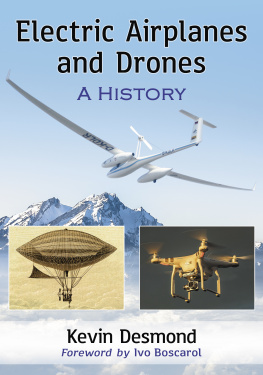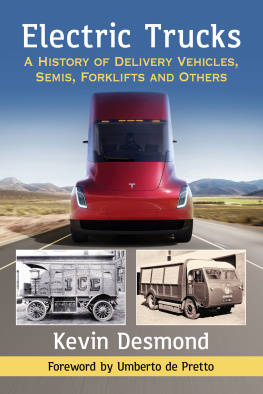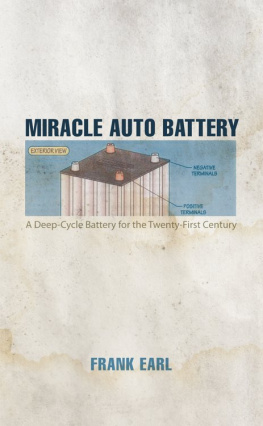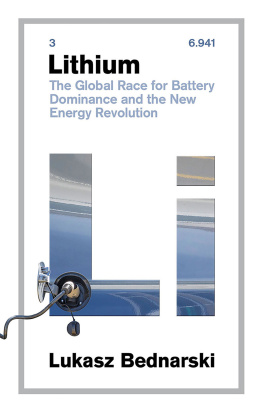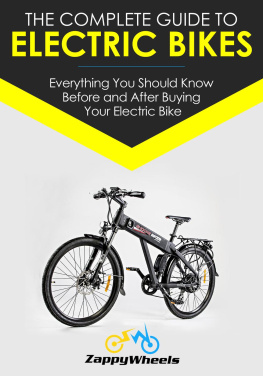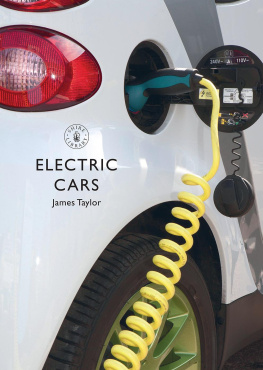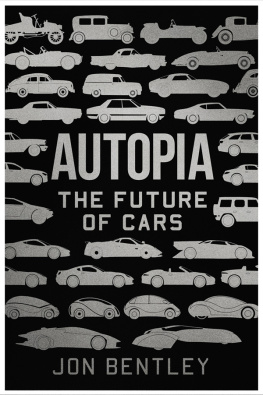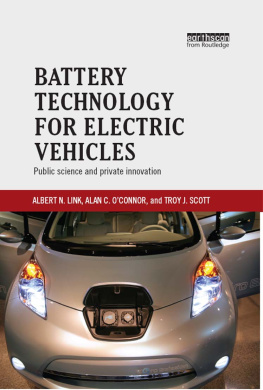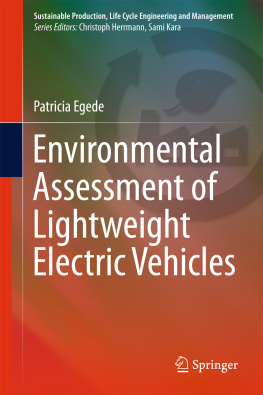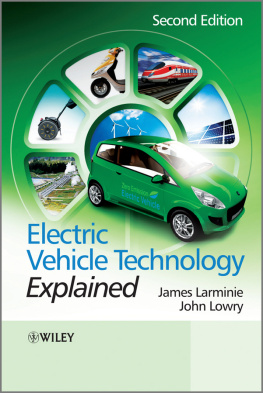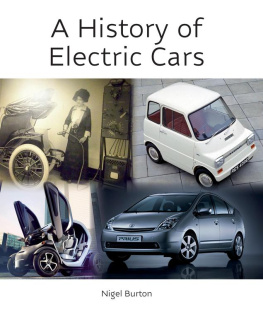
Also by KEVIN DESMOND
AND FROM MCFARLAND
Electric Motorcycles, Bicycles and Scooters: A History (2018)
Electric Boats and Ships: A History (2017)
Innovators in Battery Technology: Profiles of 95 Influential Electrochemists (2016)
Gustave Trouv: French Electrical Genius (18391902) (2015)
Electric Airplanes and Drones
A History
KEVIN DESMOND
Foreword by Ivo Boscarol

McFarland & Company, Inc., Publishers
Jefferson, North Carolina
LIBRARY OF CONGRESS CATALOGUING DATA ARE AVAILABLE
BRITISH LIBRARY CATALOGUING DATA ARE AVAILABLE
e-ISBN: 978-1-4766-3341-1
2018 Kevin Desmond. All rights reserved
No part of this book may be reproduced or transmitted in any form or by any means, electronic or mechanical, including photocopying or recording, or by any information storage and retrieval system, without permission in writing from the publisher.
Front cover: Antares DLR-H2 aircraft (courtesy of Lange Aviation GmbH); (insets, left to right) Tissandier airship (Muse EDF Electropolis); DJI Phantom 3 Quadcopter (photograph by Marek Uliasz)
McFarland & Company, Inc., Publishers
Box 611, Jefferson, North Carolina 28640
www.mcfarlandpub.com
To
(Icarus),
to (Elektra)
and to (Hlios)
Acknowledgments
The author would like to thank the following for their kind help in this book:
TajaBoscarol; Andr Borschberg; Robert J. Boucher; HeinoBrditschka; Muse Air + Espace; Chard Museum (Vince Lean); Julie Conti; Valerie Crosby (Haringey Archive and Museum Service); Leonard DeGraaf; Deutsches Museum (Christian Schlafner); Graham Dorrington; John Emms; Didier Esteyne; Karl Fauhaber; Randall B. Fishman; Benjamin Franklin House; Stefan Gehrmann; Stefan Graupner; Ute Holder (Archives, Andor Holtsmark (Lange) Kirchheimer Zeitung); Stephen Howard (Bristol Aerospace Centre); Dan Johnson; Ted Kemp (Institution of Engineering and Technology); Kirchheimunter Teck (Archives); Jonas Larsson (SAAB); Ren Meier; Walter Ray Morgan; The Institution of Engineering and Technology; Steve Ptacek; RAF Museum, Hendon (Andrew Renwick); Eric and Irena Raymond; Brian Riddle (National Aerospace Library); Cornelia Ruppert; Muse de lAir et de lEspace (Jean-Marc Lombarde); Muse EDF Electropolis (Damien Kunz); Carolin Scheumann (ne Rochelt); Shuttleworth Aviation Trust; Siemens AG; Dean Sigler; Janice Sullivan (ne Brown); Tine Tomai; Willi Tacke; Jean-Marie Urlacher; Chip Yates; Eric Zunino, Novadem.
Thanks also to Alexandra Desmond (my long-supporting wife) and Kathryn Cooper (my indexer and proofreader).
Foreword
by Ivo Boscarol
At the beginning of the 20th century, three men, independently of one another, were tackling the question of how to convert mechanical energy into alternating current; the company cofounded by one of them, Siemens, is still developing that technology today. At the time none of them knew that they held in their hands the key to the largest revolution in the history of mankind after the inventions of the wheel and fire. Today, 100 years later, nobody can imagine life without alternating current and all its benefits.
In the last 140 years the production of electric energy has been one of the greatest pollutants of the atmosphere, but today, in the third millennium, we have finally started to practice cleaner means, without coal-fired power plants and dams which destroy nature. For example, did you know that in only two minutes the Sun sends to Earth the same amount of energy as the entire human race uses in one year?
One of the biggest advantages that electricity has over alternative means of energy is the ease of its transportationequally simple on level ground, down or uphill, wherever there are wires. And hopefully mankind will one day obtain the secrets of Nicola Tesla for wireless high-power energy transfer. But until then the use of electricity for transport has great limitationsand the greatest are of course still in aviation.
Battery energy density is still too low for transAtlantic flights, but it already offers the perfect substitute for combustion engines in powered gliders and training aircraft, where the endurance needed is about one hourthe same as for transport in megacities. While waiting for more efficient batteries, different hybrid options such as hydrogen fuel cells are an ideal solution, producing no exhaust apart from pure water.
When, 20 years ago, some of us visionary aircraft producers believed in electric aircraft propulsion, we were labeled as weirdoes. Today even the sworn kerosene users such as Airbus or Boeing are slowly getting integrated into the mindset of global players such as Siemens, Tesla, Amazon and Uber, who are seeing the world greener every day. With their integration, support and potential, electric-powered general aviation and commercial passenger aircraft are becoming more and more a reality with every passing day.
For this book, appearing at a crucial point in history, Kevin Desmond must be commended.
Ivo Boscarol is the founder of Pipistrel, electric and hybrid-electric aircraft manufacturers. Since 2007, Pipistrel has made and flown more than five dozen electric aircraft.
Preface
I spent the first four months of my infancy in 1950 in a house adjoining the London Terminal Airport, then in Croydon, Surrey, and must have been awakened many a time by the noise of airliners taking off and landing overhead. My godfather worked for the British Overseas Aircraft Corporation. As a schoolboy, I built model aircraft powered by wound-up or stretched-out rubber bands, except for the toy my dad gave me one day: a tethered Electronic Falcon Plane that flies itself, made by Remco Industries, Inc. Its power came from a battery enclosed in a pocket flashlight device. Like a flashlight, you switched it on, the prop turned, and the plane went round and round in circles, until you became bored! From then on, like everybody else, I have traveled the world in avgas-fueled aircraft, piston or jet. I use the reading lamp above, watch the screen on the back of the seat in front of me, watch the wing flaps move and hear the undercarriage retractknowing they are electric or electro-hydraulic.
A definition is perhaps necessary. An electric aircraft is a vehicle which, with or without a pilot or passenger(s), is regularly capable of taking off from the ground, rising to a height of no less than 100 feet and no more than 80,000 feet, and then flying for between 4 minutes and 4 years, using electric or hybrid-electric propulsion. This definition covers everything from a fingertip drone to an airship; this also makes provision for a roadworthy vehicle or flying car.
Avgas airplanes dumped 700 million metric tons of carbon dioxide into the air in 2013, according to a 2015 report from National Geographic. The aircraft industry is expecting a sevenfold increase in air traffic by 2050, and a fourfold increase in greenhouse gas emissions unless fundamental changes are made. The crucial next step towards ensuring the aircraft industry becomes greener is the full electrification of commercial aircraft. This means zero CO2 and NOx emissions, with energy sourced from power stations that are themselves sustainably fueled; a step-change in fuel efficiency is crucial to maintain emission levels promised in the Paris Agreementa 30 percent improvement in aircraft efficiencies is required by 2035. As this book is published, the world of aviation is bravely accelerating into a new, more silent and less polluting era of electric propulsion. Described as the Third Revolution in aviation (after heavier-than-air flight and jet engines), the introduction of hybrid-electric aircraft could be a massive breakthrough for sustainable aviation.
Next page
